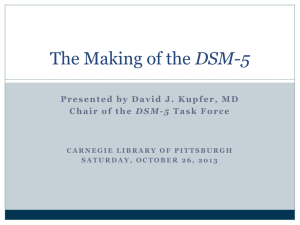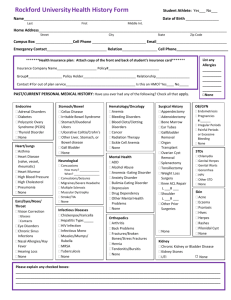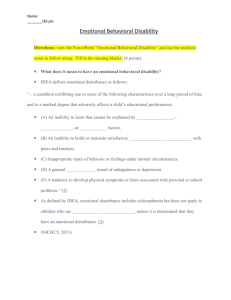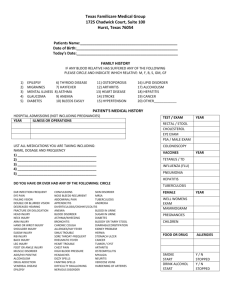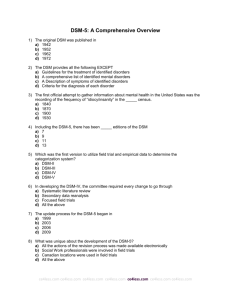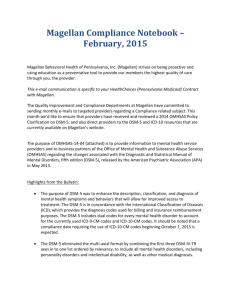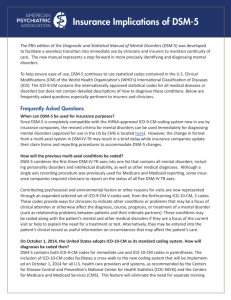Chapter 4 (DSM
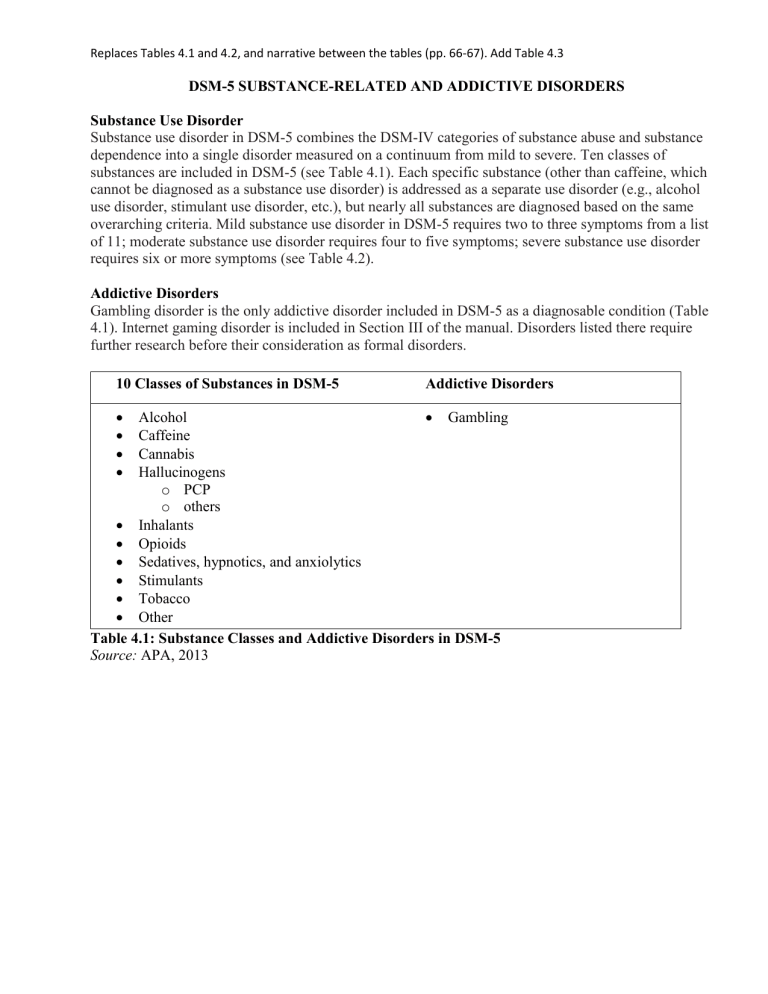
Replaces Tables 4.1 and 4.2, and narrative between the tables (pp. 66-67). Add Table 4.3
DSM-5 SUBSTANCE-RELATED AND ADDICTIVE DISORDERS
Substance Use Disorder
Substance use disorder in DSM-5 combines the DSM-IV categories of substance abuse and substance dependence into a single disorder measured on a continuum from mild to severe. Ten classes of substances are included in DSM-5 (see Table 4.1). Each specific substance (other than caffeine, which cannot be diagnosed as a substance use disorder) is addressed as a separate use disorder (e.g., alcohol use disorder, stimulant use disorder, etc.), but nearly all substances are diagnosed based on the same overarching criteria. Mild substance use disorder in DSM-5 requires two to three symptoms from a list of 11; moderate substance use disorder requires four to five symptoms; severe substance use disorder requires six or more symptoms (see Table 4.2).
Addictive Disorders
Gambling disorder is the only addictive disorder included in DSM-5 as a diagnosable condition (Table
4.1). Internet gaming disorder is included in Section III of the manual. Disorders listed there require further research before their consideration as formal disorders.
10 Classes of Substances in DSM-5 Addictive Disorders
Alcohol
Caffeine
Cannabis
Hallucinogens o PCP o others
Inhalants
Opioids
Sedatives, hypnotics, and anxiolytics
Stimulants
Tobacco
Other
Gambling
Table 4.1: Substance Classes and Addictive Disorders in DSM-5
Source: APA, 2013
Diagnostic Criteria for Substance Use Disorders in DSM-5
Using larger amounts or using for a longer time than intended
Persistent desire or unsuccessful attempts to cut down or control use
Great deal of time is spent obtaining, using, or recovering
Craving or a strong desire or urge to use
Failure to fulfill major roles at work, school, or home
Persistent social or interpersonal problems caused by substance use
Important social, occupational, recreational activities given up or reduced
Use in physically hazardous situations
Use despite physical or psychological problems caused by use
Tolerance
Withdrawal (not documented after repeated use of PCP, inhalants, hallucinogens)
Severity Criteria
›
Mild: 2-3 symptoms
›
Moderate: 4-5 symptoms
›
Severe: 6 or more symptoms
4.2: Diagnostic Criteria and Severity Index for Substance-Related Disorders in DSM-5
Substance-Induced Disorders in DSM-5
Intoxication
Withdrawal
Psychotic Disorder
Bipolar Disorder
Depressive Disorder
Anxiety Disorder
Sleep Disorder
Delirium
Neurocognitive
Sexual Dysfunction
4.3: Substance-Induced Disorder in DSM-5
REFERENCES
American Psychiatric Association. (2013). Diagnostic and statistical manual of mental disorders (5th ed.). Arlington, VA: American Psychiatric Publishing.
DSM-5 Fact Sheet: http://www.dsm5.org/Documents/Substance%20Use%20Disorder%20Fact%20Sheet.pdf
INTERNET RESOURCES
DSM-5: http://www.dsm5.org
Psychiatry.org: http://www.psychiatry.org/practice/dsm


